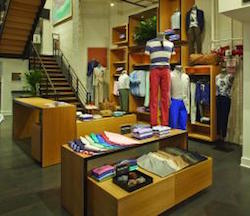Articles and News
The Future Of Retail: Two’s Company, Three’s A Trend | April 13, 2016 (0 comments)

Merrick, NY—Two articles popped up this week—or should we say two more articles—addressing the future of retail jewelry stores and how the formula needs to change to keep Millennials engaged. Of course, The Centurion Newsletter frequently has discussed the future of jewelry retailing and the new luxury customer. For a refresher of our coverage, read what that new luxury customer wants here, and read about two innovative jewelry stores that are turning traditional on its head here and here.
The need to adapt is essential on both sides of the proverbial pond: Sam Willoughby, director of the IJL show (the main jewelry trade show in London) yesterday penned this guest blog on gemkonnect.com, encouraging jewelers to learn from Apple’s retail-by-experience formula.
And as the fashion world says, “three’s a trend.” Veteran sales expert and author Peter Smith’s guest piece in National Jeweler this week details his personal experiences visiting jewelry stores both boring and brilliant.
Yet some things never change. In its The State of Retail 2016 survey, tech company TimeTrade conducted a survey asking 5,044 consumers about their perceptions and habits around retail shopping. TimeTrade creates responsive customer engagement platforms for a variety of industries, notably retail, banking, education, and healthcare.
The survey showed 90% of respondents still plan to shop in brick and mortar stores as much this year as they did last year, and 68% like the fact that online-born retailers like Warby Parker and Bonobos are opening physical locations. But that’s where things take a sharp turn into new territory, as sometimes the best change a retailer can make to a store is to stop selling. Yes, really! It’s proving successful for both e-tailers dabbling in the real world and established retailers ranging from upscale brands like Tory Burch to mass merchants like Staples.
A recent article in Advertising Age addresses the “un-store” of the future, and explains why show-and-tell can be more effective than show-and-sell. (Or at least, not selling it at that moment. The ultimate goal, of course, still is to move merchandise.)
E-commerce menswear brand Bonobos has opened showrooms, called Guideshops, where customers can feel and try on the merchandise, then order it online. So has online eyewear brand Warby Parker—and of course Blue Nile did the same with its boutiques in select Nordstrom stores. Brian Watkins, president of Ritani, addressed this issue in an earlier video interview you can see here.


Image from Bonobos's website, left, and a view of its Fifth Avenue Guideshop, right. Photo via Advertising Age.
But even old retailers have to try new tricks. Office-supply superstore Staples sells a lot of merchandise online but has seen foot traffic in its physical stores dwindling. So it recently partnered with office-sharing startup Workbar to convert a portion of space in its stores into workspaces, away from the merchandise. Sneaker and fitness gear giant Reebok installed CrossFit gyms at its FitHub stores, and when upscale designer Tory Burch launched a line of athletic wear, she established yoga classes at her new Tory Sport store.
For more about the un-store of the future, read the entire Ad Age article here.
TimeTrade’s survey, meanwhile, shows that convenience is more important than ever to today’s consumer. 59% would schedule an appointment with a sales associate for a time that’s convenient. 54% say prompt service is most important, followed by 30% who are looking for a personalized experience.
The infographic below shows highlights from the survey, and you can read more of TimeTrade’s research results here.








